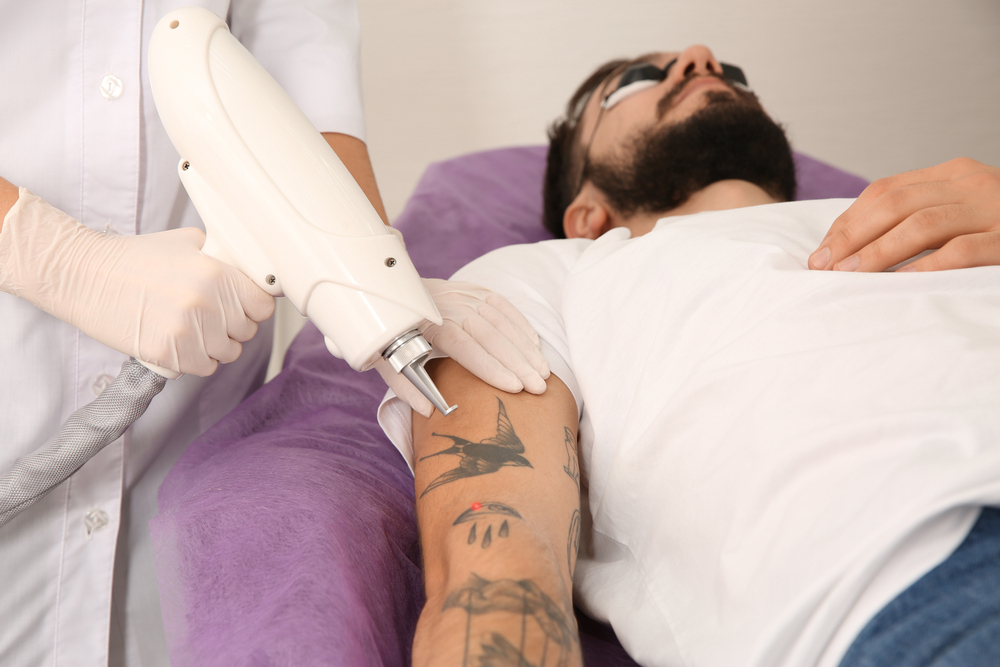Tattoos can reflect identity, beliefs, or special memories. Over time, those meanings may change or fade. Some people shift careers and need a different appearance, prompting them to consider tattoo removal. Others grow out of designs that no longer fit their lifestyle or personality, leading them to explore tattoo removal as an option.
How Tattoo Removal Works
Tattoo ink sits deep in the skin. Removal methods target this ink and break it into smaller pieces. Your immune system then removes the fragments over time. This process happens slowly and needs multiple sessions. The method chosen depends on tattoo size, age, colors, and skin type.
Laser Removal and Other Options
Laser removal is the most common and effective tattoo removal method. It works by targeting the ink with a laser, breaking it into tiny particles that the body can gradually eliminate. This process does not damage the surrounding skin, though it requires multiple sessions for best results. With each treatment, the tattoo typically fades more, making it ideal for most tattoo sizes and colors.
Other methods include surgical excision, dermabrasion, and topical creams. Surgical excision involves cutting out the tattooed skin and stitching the area.. Dermabrasion uses a rotating device to sand off the skin’s surface, which can be painful, requires longer healing, and may lead to scarring, especially for those with darker skin tones. Tattoo removal creams are the least effective, often only slightly fading the tattoo and causing irritation or uneven results.
What to Expect During Laser Treatment
Laser tattoo removal typically begins with a consultation where a trained professional evaluates your tattoo and skin type. During this initial visit, they will determine how many sessions you may need based on the ink’s color, depth, and your skin’s response. The expert will also explain the treatment plan and provide guidance on how to care for the area between sessions.
Each laser session is usually brief, lasting only a few minutes depending on the tattoo’s size. To minimize discomfort, a numbing cream or cooling device is often used. During the procedure, the laser breaks up the ink particles in the skin, which may cause a sensation similar to heat or a rubber band snap. After treatment, you may notice swelling, redness, or blistering, and it’s important to follow aftercare instructions closely.
Factors That Affect Tattoo Removal Results
Several factors influence how effectively a tattoo can be removed. Dark inks such as black tend to fade more quickly than colored inks, while green, blue, and yellow pigments usually require more sessions and stronger lasers to break down. Older tattoos generally respond better to removal because the ink has already started to degrade over time. The depth and quality of the tattoo, such as whether it was done professionally or by an amateur also affect how many treatments are needed.
Skin tone plays a key role in the laser removal process. Lighter skin typically responds better to treatment, while darker skin requires more cautious handling to avoid pigment changes or scarring. A strong immune system also helps speed up the process, as it clears away broken-down ink between sessions.
Reclaim Your Skin with Confidence
Tattoo removal is a journey that requires time, care, and expert support. Trusting a qualified professional ensures the safest and most effective results. With today’s advanced technology, you can move forward with confidence and clarity.

